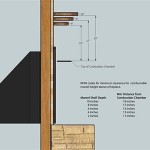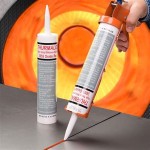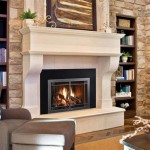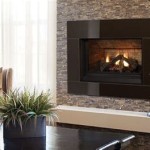Mantle Brackets Over Fireplace: Function, Aesthetics, and Installation
The fireplace, long a focal point in homes, continues to be a design element that evokes feelings of warmth, comfort, and tradition. A key component in enhancing the fireplace's visual appeal is the mantel, a shelf-like structure typically positioned above the firebox. Supporting this mantel are the mantle brackets, which play a crucial role in both the structural integrity and aesthetic design of the fireplace. Understanding the function, aesthetic considerations, and installation process of mantle brackets is essential for homeowners seeking to create a cohesive and visually pleasing fireplace.
Mantle brackets are primarily designed to bear the weight of the mantel itself and any decorative objects placed upon it. The strength and weight-bearing capacity of the brackets are determined by several factors, including the material used in their construction, their size, and the method of attachment to the wall. Brackets are available in a wide range of materials, including wood, metal (such as iron, steel, and brass), and even stone. The choice of material often depends on the overall style of the fireplace and the desired aesthetic. The design of the bracket can range from simple, functional forms to highly ornate and decorative styles that contribute significantly to the fireplace's visual impact.
Understanding the Structural Role of Mantle Brackets
The primary function of mantle brackets is to provide structural support for the mantel. Without adequate support, the mantel could sag, warp, or even detach from the wall, posing a safety hazard. The weight-bearing capacity of the brackets must be carefully considered in relation to the weight of the mantel and any items that will be placed upon it. Factors such as the type of wall construction (e.g., wood framing, brick, or concrete) also influence the selection and installation of appropriate brackets. When installing a mantel on a masonry fireplace, specialized anchors and techniques are required to ensure a secure and lasting connection. A professional installer can assess the specific needs of the installation and recommend the appropriate brackets and installation methods.
The distribution of weight is another critical consideration. Brackets should be positioned strategically along the length of the mantel to distribute the load evenly. For longer mantels, multiple brackets may be necessary to prevent sagging. The placement of the brackets also affects the overall appearance of the fireplace. They can be positioned to be highly visible, accentuating the design, or they can be discreetly hidden to create a floating mantel effect.
The material properties of the brackets also impact their suitability for a particular application. Wood brackets, while aesthetically pleasing, may not be as strong as metal brackets and may be more susceptible to damage from heat or moisture. Metal brackets offer greater strength and durability, making them a suitable choice for supporting heavier mantels. The choice of material should be balanced with the desired aesthetic and the specific requirements of the installation.
Aesthetic Considerations for Mantle Bracket Selection
Beyond their structural function, mantle brackets play a significant role in the aesthetic design of the fireplace. The style, material, and finish of the brackets can complement the overall décor of the room and enhance the visual appeal of the fireplace. The design possibilities are virtually limitless, ranging from rustic and traditional styles to modern and contemporary designs.
Traditional fireplace designs often feature ornate wooden brackets with intricate carvings or scrolled metal brackets with a vintage aesthetic. These brackets contribute to a sense of warmth, history, and craftsmanship. The finish of the brackets can also play a significant role. A dark wood stain or a wrought iron finish can evoke a sense of antiquity, while a bright paint color or a polished metal finish can create a more modern look.
Contemporary fireplace designs often incorporate simpler, more minimalist brackets. These brackets may be made of sleek metal or painted to match the wall, creating a seamless and understated look. The focus is often on clean lines and a lack of ornamentation, allowing the fireplace itself to be the primary focal point. The choice of bracket style should be carefully considered in relation to the overall design of the room and the desired aesthetic.
The size and proportion of the brackets are also important considerations. Brackets that are too small may appear inadequate and fail to provide sufficient support, while brackets that are too large may overwhelm the mantel and detract from its visual appeal. The size of the brackets should be proportionate to the size of the mantel and the overall dimensions of the fireplace. A well-proportioned bracket will enhance the balance and harmony of the design.
The visibility of the brackets is another design choice. Some homeowners prefer to showcase the brackets as a decorative element, while others prefer to conceal them to create a floating mantel effect. Concealed brackets require a different installation technique and may involve embedding the brackets into the wall or using specialized hardware to support the mantel from behind. The choice of visibility depends on the desired aesthetic and the overall design of the fireplace.
Installation Process and Important Considerations
The installation of mantle brackets requires careful planning and execution to ensure both structural integrity and aesthetic appeal. The process involves several steps, including measuring, marking, drilling, and securing the brackets to the wall. Proper tools and materials are essential for a successful installation.
The first step is to determine the desired location of the mantel and the brackets. The height of the mantel should be appropriate for the size of the fireplace and the overall dimensions of the room. The brackets should be positioned to provide adequate support for the mantel and to complement its design. Precise measurements are crucial to ensure that the mantel is level and that the brackets are properly aligned.
Once the location of the brackets has been determined, the next step is to mark the positions for the mounting holes. A level should be used to ensure that the brackets are aligned horizontally. The type of wall construction will determine the appropriate type of fasteners to use. For wood framing, wood screws are typically used. For brick or concrete walls, specialized anchors and masonry screws are required.
Drilling the mounting holes is a critical step in the installation process. The size of the drill bit should be appropriate for the size of the fasteners being used. When drilling into masonry, a hammer drill may be necessary to penetrate the hard surface. It is important to exercise caution when drilling near electrical wiring or plumbing pipes.
After the mounting holes have been drilled, the brackets can be secured to the wall using the appropriate fasteners. It is important to tighten the fasteners securely to ensure that the brackets are firmly attached to the wall. A level should be used to check that the brackets are still aligned horizontally after they have been installed.
Once the brackets have been installed, the mantel can be placed on top of them. The mantel should be carefully centered and aligned with the brackets. It may be necessary to shim the mantel to ensure that it is level. The mantel can be secured to the brackets using screws or adhesive. It is important to use fasteners or adhesive that are compatible with the materials of the mantel and the brackets.
Safety is paramount during the installation process. Eye protection and gloves should be worn to protect against dust and debris. Power tools should be used with caution, and all safety precautions should be followed. If the installation involves working at heights, a sturdy ladder should be used and all necessary safety measures should be taken.
For complex installations or when dealing with heavy mantels, it is advisable to consult with a professional installer. A professional installer has the knowledge, skills, and tools necessary to ensure a safe and successful installation. They can also provide guidance on the selection of appropriate brackets and installation methods.
Regular inspection and maintenance of the mantle and brackets are essential to ensure their continued structural integrity and aesthetic appeal. The brackets should be checked periodically for signs of loosening or damage. The mantel should be cleaned regularly to remove dust and debris. Any necessary repairs should be made promptly to prevent further damage.
Material Selection and its Impact on Longevity
The choice of material for mantle brackets is a key determinant of their longevity and overall performance. Each material offers distinct advantages and disadvantages in terms of strength, durability, aesthetic appeal, and cost. Understanding these nuances allows homeowners to make informed decisions that align with their specific needs and preferences.
Wood brackets are a popular choice due to their natural beauty and versatility. They can be easily carved, stained, or painted to match any décor. However, wood is susceptible to moisture damage, rot, and insect infestation, particularly in humid environments. Hardwoods like oak and maple are more durable than softwoods like pine, but even the most durable wood brackets require regular maintenance to protect them from the elements. Wood brackets are generally suitable for lighter mantels and decorative items.
Metal brackets, such as those made from iron, steel, or brass, offer superior strength and durability compared to wood. They are resistant to moisture, rot, and insect infestation, making them a long-lasting option. Iron brackets are often chosen for their rustic appeal, while steel brackets provide a more modern and industrial aesthetic. Brass brackets offer a touch of elegance and can be polished to maintain their shine. Metal brackets are capable of supporting heavier mantels and are ideal for fireplaces that are frequently used.
Stone brackets, typically made from materials like granite or limestone, are the most durable and visually striking option. They are virtually impervious to moisture, heat, and impact damage, making them a long-lasting investment. Stone brackets are often chosen for their timeless beauty and ability to complement a variety of architectural styles. However, stone brackets are also the heaviest and most expensive option, requiring specialized installation techniques and a strong supporting wall structure. They are best suited for substantial mantels and upscale fireplaces.
The finish applied to the brackets also plays a role in their longevity. A protective coating, such as paint, varnish, or powder coating, can help to prevent corrosion, fading, and scratching. Regular cleaning and maintenance can further extend the life of the brackets.

Rustic Fireplace Mantel With Metal Brackets 5x6 6x6 6x8 Or 8x8 Mantle Floating Barn Wood Beam Custom Lengths

Metal Mantle Bracket Black Steel Rustic Mantel With

Rustic Mantel Bracket Sold Individually Industrial Black Heavy Duty Metal Wall Mount Mantle

Fireplace Mantle Corbel Corbels Large Bracket In 2024 Abstract Painting Wall Canvas

Fireplace Mantel Support Sold Individually Decor Rustic Farmhouse Shelf Metal Brackets Industrial

Mantel Decor Bracket Corbels Fireplace Rustic Farmhouse Mantle

The Original Kudlick Farmhouse Mantle Brackets Industrial Farm Co

Farmhouse Mantel Brackets Fireplace Bracket Metal Supports Rustic Shelving

Custom Made Fireplace Mantel Bracket By Dva Metal Ltd Custommade Com

How To Install A Mantel On Brick Fireplace 1905 Farmhouse
Related Posts








